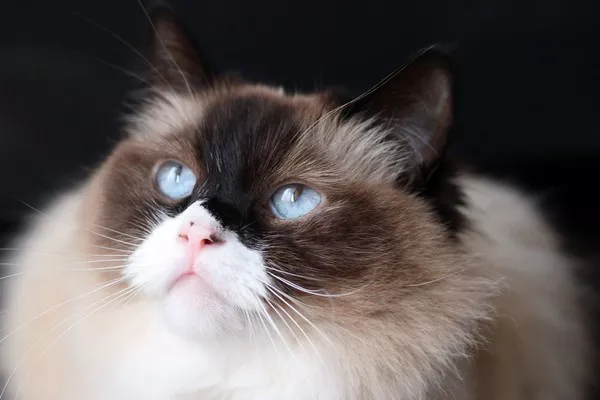Sodium is an essential mineral for all animals, including cats. It helps maintain proper fluid balance, nerve function, and muscle contraction. However, like many nutrients, too much sodium can cause health problems in cats. Cats get sodium from their food, both commercial cat food and any human foods they might eat. Unlike humans, cats don’t naturally crave salty foods. Their bodies are designed to get the right amount of sodium from their prey in the wild.
How Much Sodium Do Cats Need?
Recommended Daily Sodium Intake for Cats
The Association of American Feed Control Officials (AAFCO) provides guidelines for cat food nutrition. According to AAFCO:
- The minimum sodium requirement for adult cats is 0.2% of dry matter in food
- For growing kittens, the minimum is 0.3%
- There is no established maximum limit, but most experts recommend keeping sodium below 1.5%
For an average 10-pound cat eating about 250 calories per day, this translates to roughly 42-315 mg of sodium daily. Most healthy cats do well with about 100-200 mg of sodium per day.
Comparing Cat Needs to Human Consumption
To put this in perspective:
- A cat’s sodium needs are much lower than a human’s
- While humans might consume 2,000-3,000 mg of sodium daily
- Cats only need about 1/20th of that amount
- Their small size and different metabolism explain this big difference
Risks of Too Much Sodium for Cats
Short-Term Effects of Excess Sodium
When cats eat too much sodium at once:
- They may drink more water than usual
- Some cats might vomit or have diarrhea
- In severe cases, sodium poisoning can occur
Signs of sodium poisoning include:
- Excessive thirst and urination
- Lethargy or weakness
- Tremors or seizures
- In worst cases, coma or death
Long-Term Effects of High Sodium Diets
Consistently high sodium intake can lead to:
- Increased blood pressure (hypertension)
- Strain on the heart and kidneys
- Worsening of existing kidney disease
- Potential contribution to urinary tract issues
Special Considerations for Cats with Health Issues
Cats with Kidney Disease
Kidney disease is common in older cats. These cats:
- Often have trouble regulating sodium
- May need specially formulated low-sodium diets
- Should have sodium intake carefully monitored by a vet
Cats with Heart Conditions
Cats with heart problems:
- May need restricted sodium to reduce fluid retention
- Often benefit from therapeutic cardiac diets
- Should never be given high-sodium treats
Hypertensive Cats
High blood pressure in cats:
- Can damage eyes, kidneys, heart and brain
- Often requires both medication and diet management
- Needs regular veterinary monitoring
Common High-Sodium Foods to Avoid
Human Foods Dangerous for Cats
Many human foods contain too much sodium for cats:
- Processed meats (bacon, ham, deli meats)
- Cheese and other dairy products
- Canned soups or broths
- Fast food or table scraps
- Chips, pretzels, and other salty snacks
Potentially Problematic Cat Foods
Some cat foods may be higher in sodium:
- Certain “gourmet” or flavored varieties
- Some prescription diets (for specific conditions)
- Cheap commercial foods with poor formulation
Reading Cat Food Labels for Sodium Content
Where to Find Sodium Information
On cat food labels, look for:
- The guaranteed analysis section
- The nutritional adequacy statement
- The ingredient list (for sodium-containing additives)
Understanding the Numbers
When evaluating sodium content:
- Dry food typically shows sodium as percentage of dry matter
- Wet food percentages are harder to compare directly
- Look for foods with sodium between 0.2%-0.6% for most cats
Safe Sodium Sources for Cats
Natural Sodium in Cat Foods
Good cat foods contain sodium from:
- Meat and fish ingredients (natural sodium content)
- Small amounts of added salt for balance
- Occasionally seaweed or other mineral sources
When Supplementation Might Be Needed
In rare cases, vets may recommend:
- Electrolyte solutions for dehydrated cats
- Temporary sodium adjustments for specific conditions
- Never supplement sodium without veterinary advice
Myths About Cats and Sodium
“Cats Need Salt Like Humans Do”
This is false because:
- Cats have much lower sodium requirements
- Their bodies conserve sodium efficiently
- They don’t lose sodium through sweat like humans
“All Cat Foods Have Proper Sodium Levels”
Not always true because:
- Some specialty foods may be formulated differently
- Quality control varies between brands
- Individual cats have different needs
Practical Tips for Managing Your Cat’s Sodium Intake
For Healthy Cats
- Stick to high-quality commercial cat foods
- Limit treats to 10% of daily calories
- Avoid giving human food as treats
- Provide fresh water at all times
For Cats with Health Issues
- Follow your vet’s dietary recommendations exactly
- Use prescription diets as directed
- Monitor water intake and urination habits
- Report any changes to your vet promptly
When to Consult Your Veterinarian
Contact your vet if:
- Your cat shows signs of sodium imbalance
- You’re considering a diet change
- Your cat has existing health conditions
- You have questions about proper nutrition
Conclusion
Cats need small amounts of sodium for good health, but too much can cause serious problems. Most cats get enough sodium from quality commercial cat foods without needing supplements. Special care should be taken with cats that have kidney, heart, or blood pressure issues. When in doubt, consult your veterinarian about your cat’s specific nutritional needs. Remember that each cat is unique, and what works for one may not be right for another. By understanding your cat’s sodium needs and being mindful of their diet, you can help ensure they live a long, healthy life.
Related Topic:






















